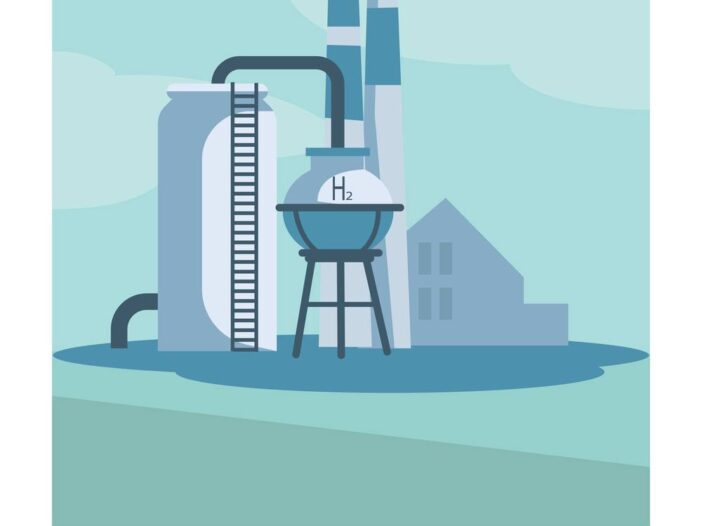In today’s Money Morning…it’s been pandemic déjà vu over there…high gas prices are making green hydrogen more attractive…there’s another factor that could bring green hydrogen costs down…and more…
I’m back in Australia after spending a month in Spain. When I left Spain to return to Australia last Saturday, things were a bit of a mess over there. And they’ve continued to deteriorate.
The war in Ukraine is having quite an impact on the country and energy markets in general.
For over a week now, Spanish truck drivers have been on strike to protest high petrol prices. With Brent crude at US$115 a barrel at the time of writing, people — and truck drivers — are really feeling it at the pump.
But the strike is snowballing, hitting supply chains, and affecting other businesses.
In fact, it’s been pandemic déjà vu over there.
There’s been panic buying, empty shelves, and fresh food shortages at supermarkets. Providers are telling restaurants they can place orders but can’t guarantee when they’ll receive the stock.
Things could get worse if the EU decides to join the US in a Russian oil embargo in retaliation of the war.
High energy prices are already causing inflation, which has hit 7.6% in Spain.
Another big concern is electricity prices, which were already high before the war had even started. The talking heads on screen are already predicting Spain will see even higher prices as the effects of the war aren’t priced in yet. It’s lucky winter is almost over.
What’s becoming increasingly clear, though, is that Europe needs to wean itself from Russian energy…and as I’ve mentioned before, this could be a boom for clean energy.
This week in particular, I’ve been keeping my eye on one sector in the clean energy transition that could really take off. I’m talking about green hydrogen.
High gas prices are making green hydrogen more attractive
Hydrogen is the most abundant and simplest element in the universe.
While hydrogen is a transparent gas, it’s denominated in different colours depending on the energy source used to process it.
So just to name a few examples, there’s black or brown hydrogen (made with coal), grey (made with natural gas), blue (made with natural gas and carbon capture), and green hydrogen (made with renewable energy such as solar and wind).
Green hydrogen is still a small percentage of the total hydrogen produced. This is because it’s been too expensive when compared to other types of hydrogen, even though renewable energy costs have come down in the last few years.
But the Ukraine war could really be a catalyst for green hydrogen after gas price rises have increased the cost of producing blue and grey hydrogen in Europe.
Here is Rystad Energy (emphasis added):
‘As the cost of blue and gray hydrogen surge in line with rising fossil fuel prices, the feasibility of green hydrogen as an affordable and secure source of renewable energy in Europe is growing, Rystad Energy research predicts.
‘Green hydrogen production was already set to take off this year globally and pass the 1-GW-milestone in 2022. However, the war in Ukraine has turbocharged the sector. Green hydrogen’s potential win comes at the expense of its fossil fuel-linked blue and gray alternatives, whose costs have increased by over 70% since the start of the war in Ukraine, rising from about $8/kg to$12/kg in a matter of days. The EU has announced plans for a €300 million funding package for hydrogen as well as the Hydrogen Accelerator initiative from REPowerEU aiming at reducing the region’s dependence on Russian gas with a further wave of support packages for green hydrogen specifically likely to emerge. Individual member states have also accelerated their domestic plans. Since the Russian invasion of Ukraine, the economics of green hydrogen have become increasingly attractive with lower production costs of US$4/kg (particularly in the Iberian Peninsula) compared to US$14/kg for blue and US$12/kg for gray in other part of Europe.’
There’s another factor that could bring green hydrogen costs down…
You see, two things influence the price of green hydrogen. One is the cost of electricity. The other is the electrolyser, the system that uses electricity to split water into hydrogen and oxygen.
There’s been a global effort to bring costs of electrolysers down and increase efficiency.
And last week, an Australian start-up named Hysata claimed they’ve made a huge breakthrough in this sector.
Hysata said they’ve developed a new ultra-high efficiency electrolyser that will allow them to produce hydrogen at a production cost of well below $2 a kilogram.
Hysata’s CEO, Paul Barrett, said the company is on a ‘clear pathway to commercialise the world’s most efficient electrolyser and reach gigawatt scale hydrogen production capacity by 2025.’
He also said:
‘Our technology will enable hydrogen production of below US$1.50/kg per kilogram by the mid-2020s, meeting Australian and global cost targets much earlier than generally expected. This is critical to making green hydrogen commercially viable and decarbonising hard-to-abate sectors.’
We’ll see how they go.
But with the economics improving for green hydrogen, we could see more investment pour into this sector.
Looking at exciting opportunities in the energy transition such as green hydrogen is what my colleague James Allen and I do at New Energy Investor. To find out more about our service, you can click here.
Until next week,
 |
Selva Freigedo,
For Money Morning
Selva is also the Editor of New Energy Investor, a newsletter that looks for opportunities in the energy transition. For information on how to subscribe, click here.

